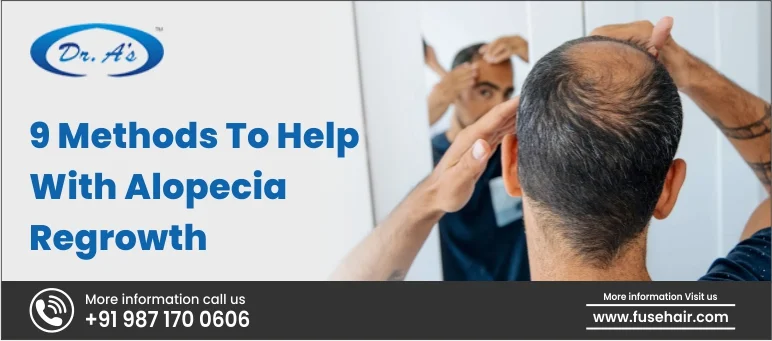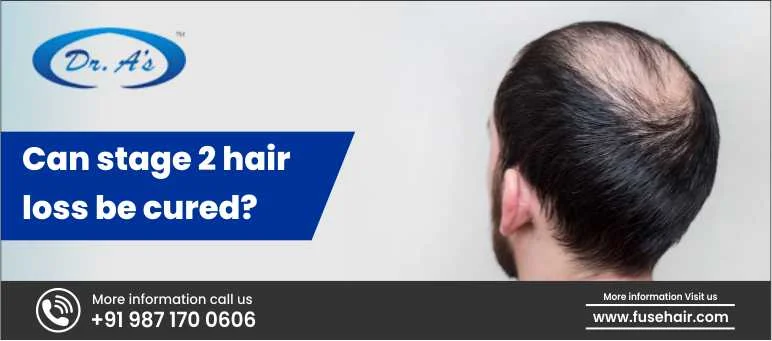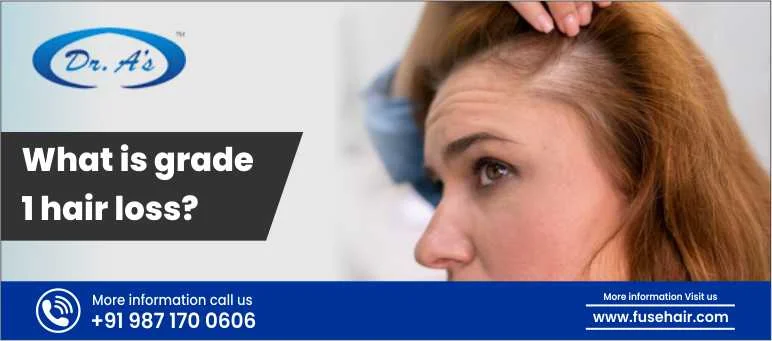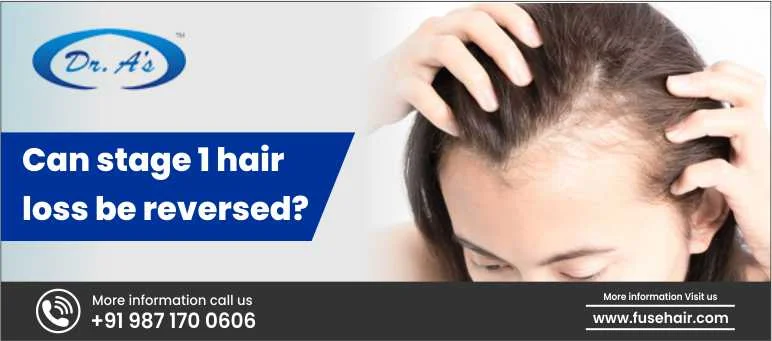
Alopecia areata, a condition causing hair loss, affects millions worldwide, impacting confidence and self-image. Its triggers vary, from genetics to autoimmune responses, stress, or underlying health issues. Understanding these reasons is vital to addressing alopecia’s complexity. Amidst this challenge, hope exists through diverse methods aiding regrowth. From lifestyle changes to medical interventions, exploring these “9 Methods To Help With Alopecia Regrowth” offers insight into managing alopecia areata. As individuals navigate this journey, discovering effective solutions becomes crucial for restoring hair and confidence. This exploration delves into actionable approaches to combat alopecia, providing guidance and possibilities for those seeking regrowth solutions.
Reason Behind Why People Get Alopecia
Alopecia manifests in various forms, but its root causes often intertwine genetic predisposition with complex environmental or immune triggers. Among these triggers, one primary factor is believed to be an autoimmune response. In alopecia areata, the immune system mistakenly attacks hair follicles, causing hair loss. Genetics also play a significant role, with hereditary factors increasing susceptibility to the condition. Family history often indicates a higher likelihood of developing alopecia.
Stress and trauma can act as catalysts, triggering or exacerbating alopecia. Emotional or physical stressors may prompt the immune system to attack hair follicles in susceptible individuals. Hormonal imbalances, particularly changes in androgen levels, might also contribute to certain forms of alopecia.
Furthermore, underlying health conditions, such as thyroid disorders or autoimmune diseases like lupus, can provoke alopecia. Environmental factors, exposure to toxins, or allergic reactions may also trigger or aggravate this condition in susceptible individuals.
Understanding alopecia’s multifaceted nature is pivotal for tailored treatment approaches. Acknowledging its interplay between genetics, immune responses, environmental triggers, and health conditions lays the groundwork for comprehensive management and potential regrowth strategies.
9 Methods That Can Curb Your Alopecia Areata
Below, we have listed 9 methods that can help with alopecia regrowth.
-
Platelet-rich plasma (PRP) therapy
Platelet-rich plasma (PRP) therapy involves drawing the patient’s blood, isolating and concentrating platelets rich in growth factors, and injecting this solution into the scalp’s affected areas. The growth factors in PRP may stimulate dormant hair follicles, encouraging regrowth. Multiple sessions, spaced over weeks, are often recommended, though results can vary among individuals. While generally safe, potential side effects are rare and include minor discomfort. Consulting a specialist is crucial to assess suitability and potential outcomes before pursuing PRP therapy for alopecia areata.
-
Hair Transplantation (FUE or FUT)
Hair transplantation techniques like Follicular Unit Extraction (FUE) and Follicular Unit Transplantation (FUT) offer surgical solutions for alopecia areata. FUE involves the meticulous extraction of individual hair follicles from donor sites, typically at the back or sides of the scalp, using tiny punches. Conversely, FUT entails surgically removing a strip of scalp containing hair follicles from the donor area and dissecting it into grafts for transplantation into the recipient sites affected by alopecia.
Both procedures aim to relocate healthy, genetically resistant hair follicles to areas susceptible to hair loss, offering a more permanent remedy. However, the choice between FUE and FUT depends on various factors, including the patient’s hair type, the extent of hair loss, and donor site availability.
While these techniques can yield natural-looking results, they necessitate careful consideration and consultation with a specialized practitioner to determine the most suitable approach and ensure optimal outcomes for hair restoration.
At Dr A’s Clinic, both FUE and FUT methods of hair transplantation are available. A consultation with Dr. Arvind Poswal and Dr. Raghav Poswal can help you make informed decisions about your alopecia regrowth journey.
-
Using Minoxidil
Minoxidil, a widely used over-the-counter topical solution, functions as a vasodilator, enhancing hair growth. Its mechanism involves the dilation of blood vessels surrounding hair follicles, thereby improving blood circulation in the scalp. This augmented blood flow aids in delivering essential nutrients and oxygen to the follicles, fostering a more conducive environment for hair regrowth in areas impacted by alopecia areata. Consistent and routine application of minoxidil is imperative to sustain and maximize its effects. However, individual responses to minoxidil can differ, necessitating patience and continued usage to observe noticeable improvements in hair density and thickness in affected regions.
-
Corticosteroids Application
Corticosteroids, available in topical creams or through scalp injections, serve as a therapeutic approach to managing alopecia areata. Their primary function involves dampening the immune system’s assault on hair follicles, thus mitigating the inflammation surrounding the affected areas. By curbing the inflammatory response, corticosteroids aim to restore the normal functioning of hair follicles, potentially stimulating regrowth in those areas impacted by alopecia areata. However, extended usage of corticosteroids may trigger adverse effects such as skin thinning or discoloration, underscoring the importance of cautious and monitored application. Additionally, the efficacy of corticosteroids varies among individuals, demanding personalized approaches and close supervision when utilizing these treatments for managing hair loss.
-
Anthralin
Anthralin, a topical treatment for alopecia areata, functions by creating a controlled irritation on the scalp. Its application induces an immune response, aiming to recalibrate the immune activity around infected hair follicles. By modulating the skin’s immune function, anthralin potentially fosters an environment conducive to hair regrowth. However, it’s essential to exercise caution as anthralin application may lead to skin irritation, causing redness or itching, and it can stain both the skin and clothing. Despite its efficacy in some cases, the discomfort and discoloration it may cause necessitate careful consideration and monitoring during its usage for managing alopecia areata.
-
Microneedling
Microneedling, by creating controlled micro-injuries, not only triggers the body’s natural wound-healing process but also encourages collagen and elastin production in the scalp. This stimulation aids in improving the overall health of the skin and hair follicles, potentially creating a more conducive environment for regrowth. Additionally, the increased absorption of topical treatments post-microneedling might enhance the effectiveness of other therapies aimed at promoting hair regrowth. However, multiple sessions spaced over time are often required to achieve noticeable results, and individual responses to microneedling can vary.
-
Using gentle shampoo and conditioner
Using gentle shampoo and conditioner is crucial in managing alopecia and promoting healthy hair. Specially formulated products free of harsh chemicals and fragrances help maintain scalp health, preventing further irritation or damage to fragile hair. Gentle cleansing removes buildup without stripping natural oils, nurturing the scalp and hair follicles. Choosing products enriched with nourishing ingredients like biotin, vitamin E, or keratin can strengthen hair strands and support regrowth. Regular use of these mild formulations maintains a clean, balanced scalp environment, which is essential for managing alopecia and promoting the conditions conducive to healthy hair growth.
-
Lifestyle changes
Lifestyle changes play a pivotal role in managing alopecia areata. Stress reduction techniques such as meditation, yoga, or counseling can significantly alleviate symptoms, as stress exacerbates hair loss. Moreover, a well-rounded diet abundant in key vitamins and minerals like zinc, iron, and biotin supports not only overall health but also hair health. These nutrients are crucial for hair growth and strength. Adequate sleep and regular exercise not only enhance overall well-being but also positively impact hair regrowth by improving circulation and reducing stress. Adopting these lifestyle changes creates a conducive environment for managing alopecia and nurturing the conditions for healthier, stronger hair.
-
Aromatherapy
Aromatherapy involving essential oils like lavender, rosemary, or peppermint applied to the scalp is thought to offer dual benefits. These oils are believed to stimulate blood circulation, fostering improved nutrient delivery to hair follicles. Additionally, their purported anti-inflammatory properties may soothe scalp irritation, potentially creating a healthier environment for regrowth. Though scientific evidence on their effectiveness is limited, anecdotal reports suggest benefits in enhancing scalp health. While some individuals find relief and potential aid in hair regrowth through aromatherapy, further research is necessary to ascertain its efficacy in treating alopecia areata comprehensively.
Conclusion
Exploring diverse strategies for alopecia regrowth offers hope amidst its challenges. Tailoring treatments, from medical interventions to lifestyle changes, fosters confidence. With ongoing research, discovering effective solutions remains pivotal, promising prospects for restoring both hair and self-assurance.
At Dr A’s Clinic, people with alopecia are given multiple solutions to reduce their hair loss and grow new hair. With the combined excellence and expertise of Dr. Arvind Poswal and Dr. Raghav Poswal, individuals with alopecia can be well assured that they are soon going to see positive results in their hair treatment journey.
FAQS
-
Does stress cause alopecia?
Stress can exacerbate alopecia, acting as a trigger for hair loss. Managing stress through techniques like meditation or counseling may help alleviate symptoms.
-
Are there natural remedies for alopecia?
Some natural remedies like essential oils (lavender, rosemary) are believed to support scalp health, potentially aiding hair regrowth. Scientific evidence is limited, however, and efficacy varies.
-
How long does it take to see results from minoxidil?
Results from minoxidil application for hair regrowth vary among individuals. Visible improvements may take several months, and consistent use is necessary for sustained effects.
-
Is hair transplantation a permanent solution for alopecia?
Hair transplantation offers a more permanent solution, utilizing healthy follicles resistant to hair loss. However, individual responses and further hair loss might require additional procedures.
-
Can lifestyle changes improve alopecia?
Yes, lifestyle changes such as stress reduction, balanced nutrition, adequate sleep, and regular exercise contribute to overall well-being and may positively impact hair regrowth.












































